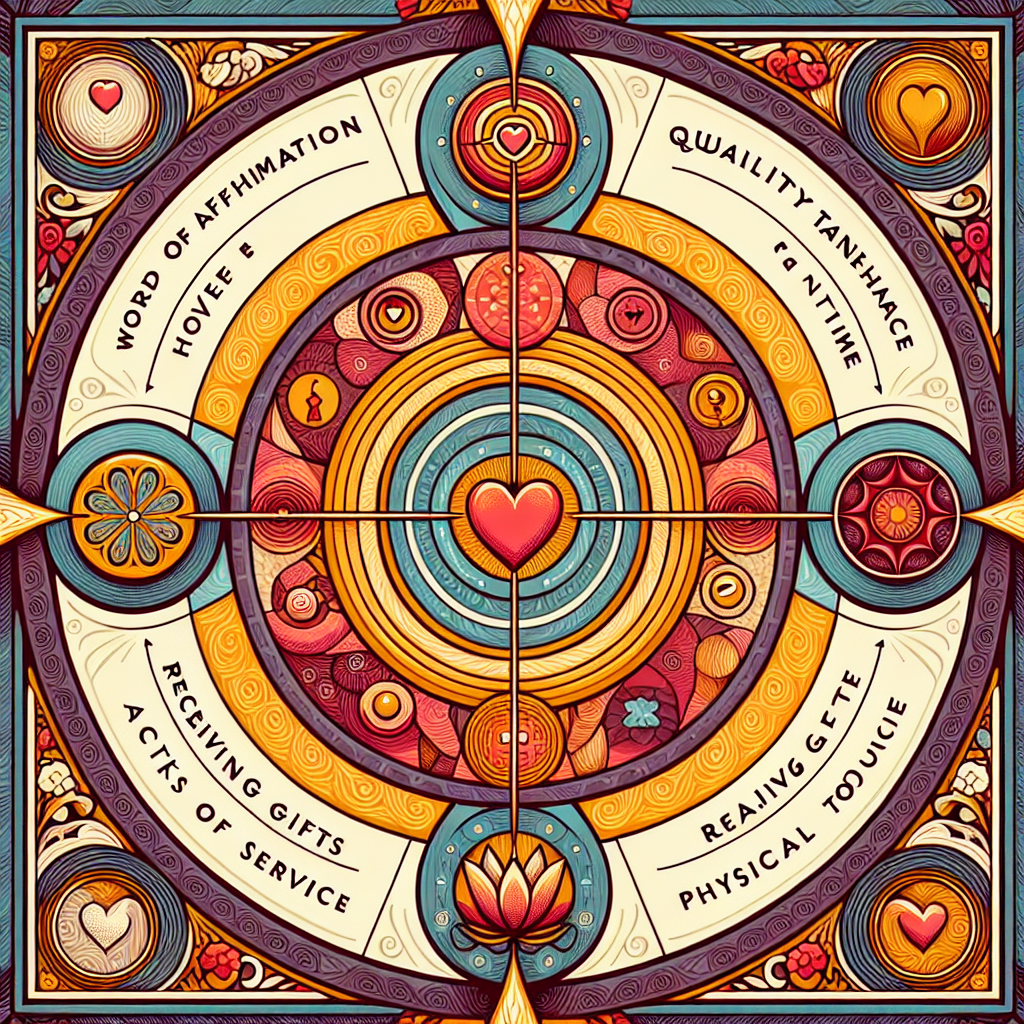
Introduction
In today’s fast-paced world, human relationships often find themselves under immense pressure. With anxiety, stress, and the increasing pace of life, emotional intimacy can often take a backseat. However, understanding and nurturing emotional intimacy is essential for any healthy relationship, be it romantic, familial, or even friendships. One invaluable framework that can guide us toward achieving deeper emotional connections is "The Five Love Languages: A Pathway to Deeper Emotional Intimacy."
Developed by Dr. Gary Chapman in his best-selling book, "The Five Love Languages," this model allows individuals to uncover their primary love language and recognize the love languages of those around them. By doing so, relationships can evolve from the mundane to the extraordinary, enabling partners to communicate love in a way that resonates profoundly and personally. In this article, we will explore each love language comprehensively, backed by case studies, actionable insights, and answers to common queries, paving the way for vous towards deeper emotional intimacy.
Understanding the Concept of Love Languages
Before diving into each specific love language, it’s crucial to understand the core principle behind them. Love languages are essentially ways in which individuals express and interpret love. According to Dr. Chapman, miscommunication often occurs when partners don’t speak the same love language.
Imagine two people in a relationship—one expresses love through acts of service, while the other values words of affirmation. Without understanding these differences, one partner may feel unappreciated while the other remains confused about why their gestures don’t seem to evoke the desired emotional connection. This dynamic emphasizes the importance of The Five Love Languages: A Pathway to Deeper Emotional Intimacy.
The Five Love Languages Explained
1. Words of Affirmation
Definition and Overview
For individuals whose primary love language is words of affirmation, verbal expressions of love, appreciation, and encouragement matter the most. Compliments, words of appreciation, and thoughtful acknowledgments can significantly enhance their sense of worth and belonging.
Case Study: Theresa and Mark
Theresa and Mark found themselves remotely disconnected over time. Theresa, who thrives on compliments, felt unloved and underappreciated, while Mark believed that his actions spoke louder than words. After attending a relationship workshop, they discovered The Five Love Languages and realized the importance of verbal affirmations in their relationship. After committing to expressing gratitude verbally, their emotional intimacy flourished.
| Table 1: Words of Affirmation – How to Use It | Action | Example |
|---|---|---|
| Compliment | "You look amazing today!" | |
| Encourage | "I believe in you." | |
| Appreciate | "Thank you for everything you do." |
2. Acts of Service
Definition and Overview
Acts of service refer to actions taken to help or support a loved one. For someone who values this love language, these acts often make them feel cherished and understood.
Case Study: Sarah and Jon
In their five-year relationship, Jon noticed that Sarah often felt overwhelmed with household chores. After some reflections, he decided to take over additional responsibilities, such as grocery shopping and meal prep. Sarah expressed profound gratitude, and their relationship transformed as Jon’s acts of service strengthened their emotional bond.
| Table 2: Acts of Service – Practical Examples | Action | Impact |
|---|---|---|
| Preparing dinner after a long day | Reduces stress | |
| Doing laundry without being asked | Shows care and consideration | |
| Taking care of errands | Provides support and partnership |
3. Receiving Gifts
Definition and Overview
For some, receiving gifts serves as a powerful expression of love. It’s not necessarily about the monetary value but the thoughtfulness and effort behind the gesture that counts.
Case Study: Emily and Noah
Every special occasion, Noah would buy Emily expensive gifts, believing it was the best way to show his love. However, Emily felt his eagerness to spend money overshadowed the thoughtfulness she valued. After discussing their love languages, Noah began drafting handmade letters and planning surprise picnics instead, enriching their emotional intimacy.
| Table 3: Receiving Gifts – Meaningful Gestures | Thoughtful Gifts | Emotional Impact |
|---|---|---|
| Handmade crafts | Personal touch | |
| Surprise notes or letters | Creates sentimental value | |
| Curating a collection of memories | Strengthens shared experiences |
4. Quality Time
Definition and Overview
Quality time emphasizes giving undivided attention to a partner, enhancing connection and emotional intimacy. For individuals who value this love language, simply being occupied in the same space isn’t enough; what matters is the quality of engagement.
Case Study: Rachel and Tom
Rachel often felt neglected as Tom spent long hours at work. They realized that their lack of quality time was the root issue of their disconnect. To address this, they established a "date night" each week, focusing exclusively on each other, thus deepening their emotional bond.
| Table 4: Quality Time – Engaging Activities | Activity | Importance |
|---|---|---|
| Weekly date night | Reconnect and foster intimacy | |
| Technology-free meals | Encourage meaningful conversation | |
| Short trips or excursions | Build memories together |
5. Physical Touch
Definition and Overview
Physical touch ranges from hugs to holding hands, serving as a fundamental way to express care and love. For those who resonate with this love language, physical connection fosters feelings of safety and security.
Case Study: Lisa and Harry
Lisa often felt unloved because Harry was not physically expressive. They discussed their differences after reading "The Five Love Languages: A Pathway to Deeper Emotional Intimacy," leading Harry to become more intentional with gestures, like cuddling while watching movies. This simple change did wonders for their emotional closeness.
| Table 5: Physical Touch – Ways to Connect | Form of Touch | Emotional Benefit |
|---|---|---|
| Hand-holding | Builds confidence and assurance | |
| Cuddling | Enhances feelings of safety | |
| Playful tickling or wrestling | Encourages bonding and fun |
Implementing the Love Languages in Daily Life
Understanding the five love languages is only the beginning. To maximize the emotional intimacy in a relationship, one must actively implement these love languages. Here are a few practical tips:
Learn and Reflect: Take the love language quiz together to identify each other’s primary love languages. Reflect on the insights gained and discuss how to implement them.
Be Intentional: Make a conscious effort to express love in ways that resonate with your partner’s love language, even if it doesn’t come naturally.
Communicate Openly: Regularly check in with one another about what is working and what isn’t. Open dialogue can prevent miscommunication, fostering trust and understanding.
Engage in Shared Activities: Create routines involving each other’s love languages. This could range from sharing ‘words of affirmation’ during coffee time to ‘quality time’ activities weekend outings.
- Celebrate Growth: Acknowledge and celebrate the changes both partners have made in adapting to each other’s love languages.
Conclusion
The journey towards emotional intimacy anchored in The Five Love Languages: A Pathway to Deeper Emotional Intimacy is one that takes effort, understanding, and commitment. Relationships are built not only on love but also on the ways we express and receive it. By embracing these languages, not only do we enrich our own lives, but we also uplift the lives of those we love.
Through case studies, we see that awareness of love languages is paramount, leading to improved communication and more fulfilling interactions. Take actionable insights from this article to deepen the bonds with your loved ones today. Love is a beautiful journey—embrace it!
FAQs
1. What are the Five Love Languages?
The Five Love Languages are: Words of Affirmation, Acts of Service, Receiving Gifts, Quality Time, and Physical Touch. Each language represents a unique way individuals express and interpret love.
2. How can I find out my love language?
You can take the official love language quiz on Dr. Chapman’s website or reflect on how you feel most loved and how you naturally express love.
3. Can love languages change over time?
Yes, love languages can evolve, often influenced by personal experiences, changes in relationships, or developmental stages in life.
4. What if my partner and I speak different love languages?
Understanding and acknowledging each other’s love languages is the first step. Make efforts to express love in the way your partner feels appreciated, while also communicating your needs.
5. Can I have more than one primary love language?
Absolutely! Many individuals may resonate with more than one love language, but typically one remains more dominant than the others.
By internalizing The Five Love Languages: A Pathway to Deeper Emotional Intimacy in our lives, we embark on a beautiful journey of connection, understanding, and authentic love. Embrace this exploration for love that resonates!















